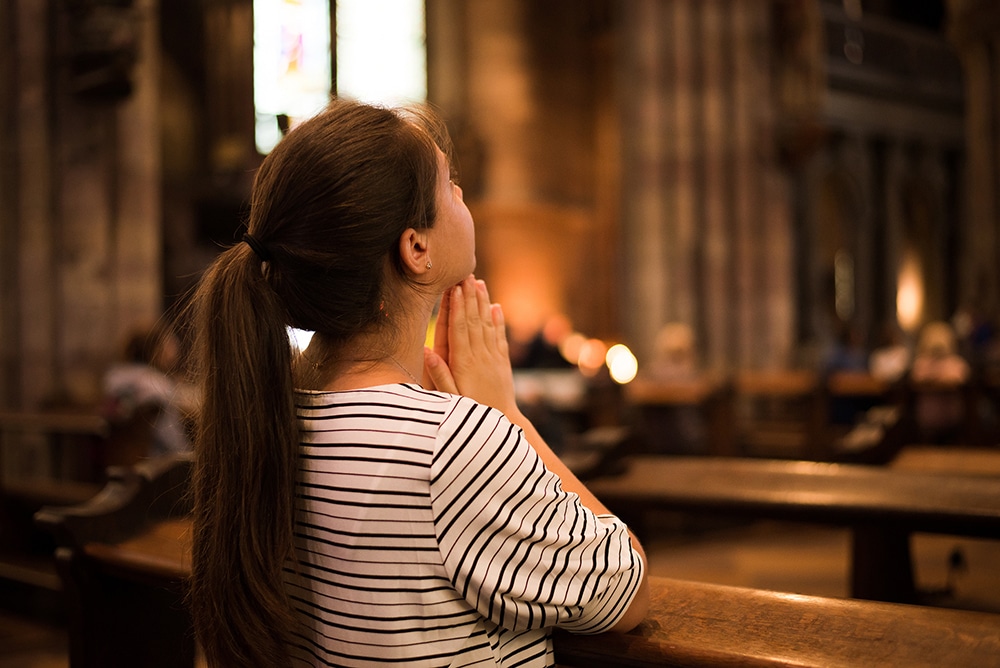 Last December, with the pandemic in full swing, the Daughters of St. Paul Choir switched its annual concert from an in-person tour to a virtual event. And we must have watched it on YouTube about 50 times. Minimum. The kids could not get enough of the songs, the dancing and the stories that accompanied the event.
Last December, with the pandemic in full swing, the Daughters of St. Paul Choir switched its annual concert from an in-person tour to a virtual event. And we must have watched it on YouTube about 50 times. Minimum. The kids could not get enough of the songs, the dancing and the stories that accompanied the event.
This year, in anticipation of the choir’s second virtual conference on Dec. 12, the Daughters of St. Paul are hosting a series of “Unboxing Christmas” events in which they are inviting viewers to prepare their hearts, homes and Nativity scenes for the coming of the Lord at Christmas.
During each “Unboxing,” the sisters discuss a figure from the Nativity scene and invite a family to place the figure into the family’s own crèche, building the Nativity each week. The first statue unboxed was Mary; the second, St. Joseph. My family had the great honor of helping share St. Joseph’s story live with the sisters. It was a special moment for us, not just because of our great respect for the “media nuns,” or because St. Joseph is the patron of our oldest child, but because the Church, of course, is wrapping up what has been a very special Year of St. Joseph on Dec. 8.
It’s hard to believe that it’s already been 12 months since Pope Francis opened the year dedicated to the foster father of Jesus. The commemorative year, invoked on the 150th anniversary of the proclamation of St. Joseph as patron of the universal Church, has been a time of much-needed reflection and focus on the quiet protector of the Holy Family. It is he who faced challenging times filled with confusion and change with great courage, prayer and fortitude. And he did so in a way that was fully human, and therefore completely relatable to each of us.
“I think sometimes we forget, perhaps, how human the story (of the Incarnation is),” said Sister Margaret Timothy in a reflection on St. Joseph during the “Unboxing” event. “Joseph was a carpenter; he probably thought he would be that for the rest of his life, and it sounds like he was. But he was also the guardian of the Incarnation, the Son of God, and the vessel of who held the Son of God. He doesn’t mention one word in all the Gospel narratives, but I’m sure he was thinking in his mind, ‘Who am I to have this?’ You can only imagine the fear.”
It’s a human story that we perhaps don’t always allow ourselves to connect with, Sister Margaret Timothy added. I found myself thinking how true that is. We become so accustomed to thinking about Mary, Joseph and Jesus as characters in a story that we often forget to reflect upon their humanity — their fears, their hopes, their joys, their insecurities. Even Jesus was fully divine and fully human.
St. Joseph is perhaps the character to whom we can relate the most. We can understand the confusion and hurt of St. Joseph when Mary arrived back in Nazareth, visibly pregnant. We can relate to his fear of harm coming to his son and to his wife. We can applaud and desire to emulate his courage and his obedience to God. In his apostolic letter Patris Corde, Pope Francis calls St. Joseph “so close to our own human experience,” and this is most certainly the case.
As we close out this Year of St. Joseph, may we not box him up in our hearts, only to be thought of when contemplating the manger scene each Advent and Christmas. Instead, let’s allow his humanity to influence our own, calling us to greater love of God and service to one another.
Gretchen R. Crowe is editorial director for periodicals at OSV. Follow her on Twitter @GretchenOSV.







